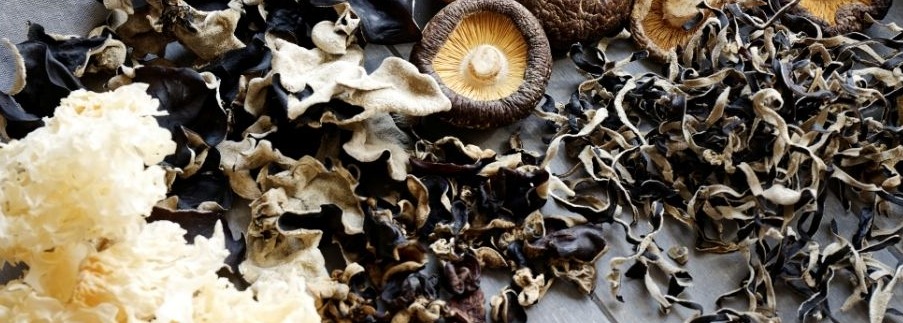Medicinal mushrooms are the original immune superfood, with a history of use spanning millennia. They are some of the most potent medicines in nature while having extremely low toxicity, even at high doses. Mushrooms are the spore-producing, umbrella-shaped fruiting bodies of fungi in the taxonomic group basidiomycetes that possess significant immunomodulatory activity.1
Key Mushroom Constituents
Clinical studies on medicinal mushrooms and their impacts on humans have been published in over a thousand papers and reports.2 Mushrooms have numerous biologically active compounds, although the most studied are the various polysaccharides found in the fruiting bodies and cultured mycelia.2 As biological response modifiers (BRMs), mushrooms offer an adaptive, intelligent approach to modulate and strengthen immune function.
Beta-Glucans
Beta-glucans comprise a group of water-soluble polysaccharides characterized by diverse structures and functions. They are known for their metabolic and immunomodulatory properties, including anticancer, antibacterial and antiviral properties.3 Glucans can adopt different chain conformations depending on the type, with mushroom-derived β-(1,3)-(1,6) glucans exhibiting a triple helix structure that determines their immunomodulatory and anticancer properties.4 Induction of cellular responses by mushrooms and other beta-glucans is likely to involve their specific interaction with several cell surface receptors, such as complement receptor 3 (CR3; CD11b/CD18), lactosylceramide, selected scavenger receptors, and dectin-1 (betaGR) receptors.5
Triterpenoids
Triterpenoids are aromatic hydrocarbons that are the functional backbone of many biological molecules. They are often bitter in nature, a feature that serves as a crude means of verifying triterpenoid-rich mushroom extracts.6 For example, reishi (Ganoderma lucidum) mushrooms are rich in a group of triterpenes known as ganoderic acids, and their biological actions include the induction of macrophage activity, liver protection and anti-tumor effects.7 Inotodiol, a triterpenoid isolated from chaga, has been shown to inhibit the proliferation of and induce apoptosis in adenocarcinoma cell lines A549.8
Bringing It All Together
Given the unique constituents specific to each mushroom species, this raises the following questions: How can you best leverage the effects of these different mushrooms? And to what extent does combining mushroom types enhance or impair their overall clinical efficacy?
In 2019, a study examined combining three different mushroom extracts into a formula and evaluated the impacts of the individual extracts versus the formula on the expression of cytokines IL-1α, IL-6, IL-10 and TNF-α in human macrophages.9 Though the study found the mushroom extracts were highly potent immuno-stimulators on their own, the combination of mushrooms stimulated a similar immune response at lower doses, suggesting the potential synergistic effect of a combined mushroom formula.9
.png?sfvrsn=c0fd2cae_5)
Kareem Kandil, MD, ND is the Immune Foundations Clinical Brand Manager at Lifestyle Matrix Resource Center. Upon graduating from medical school at Ross University School of Medicine, Dr. Kandil went on to do an observership in integrative medicine and then pursued his Doctorate of Naturopathic Medicine (ND) at National University of Health Sciences in Lombard, IL.
References



